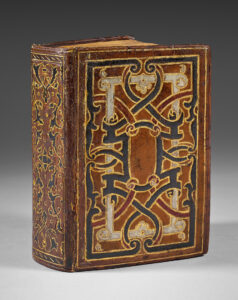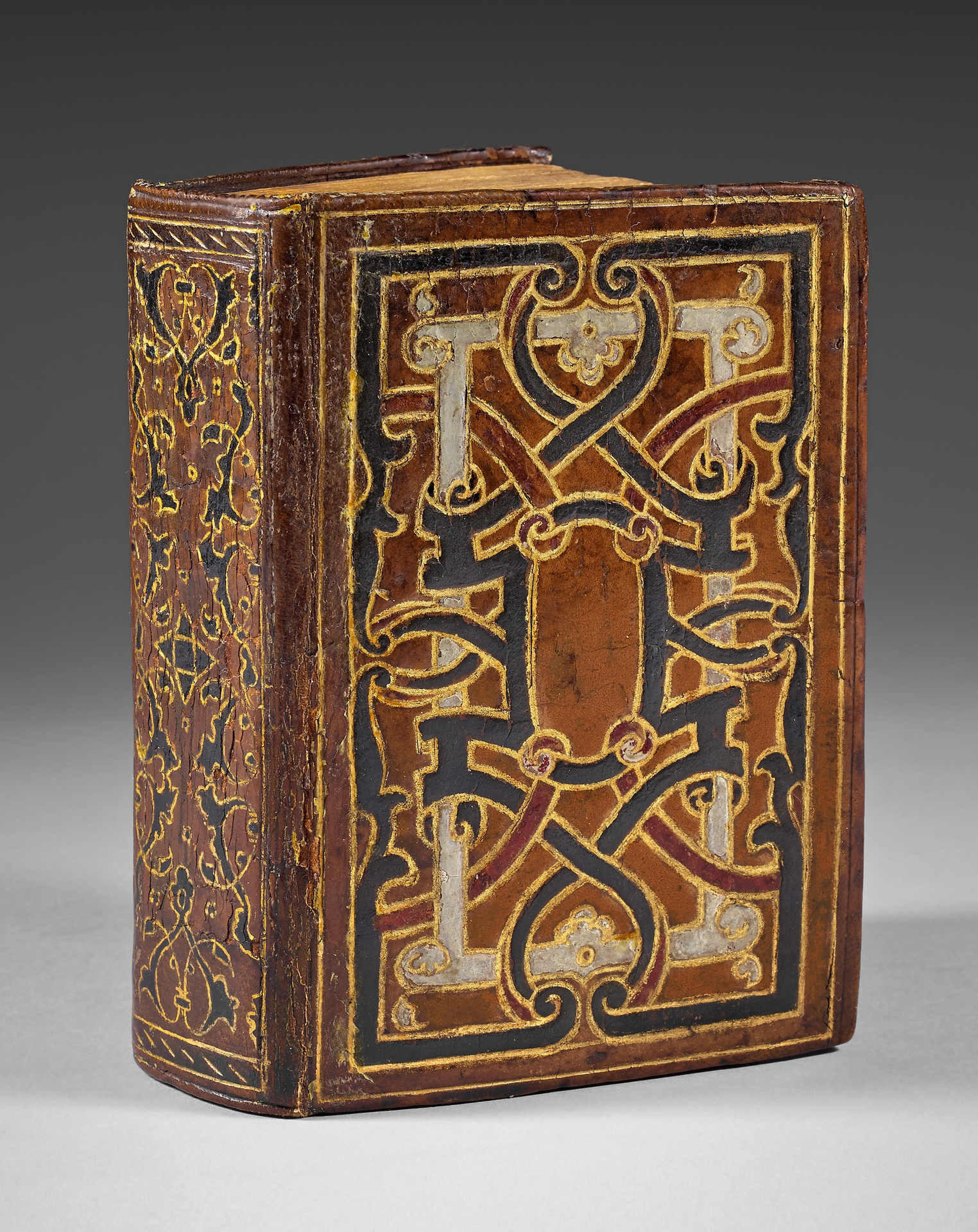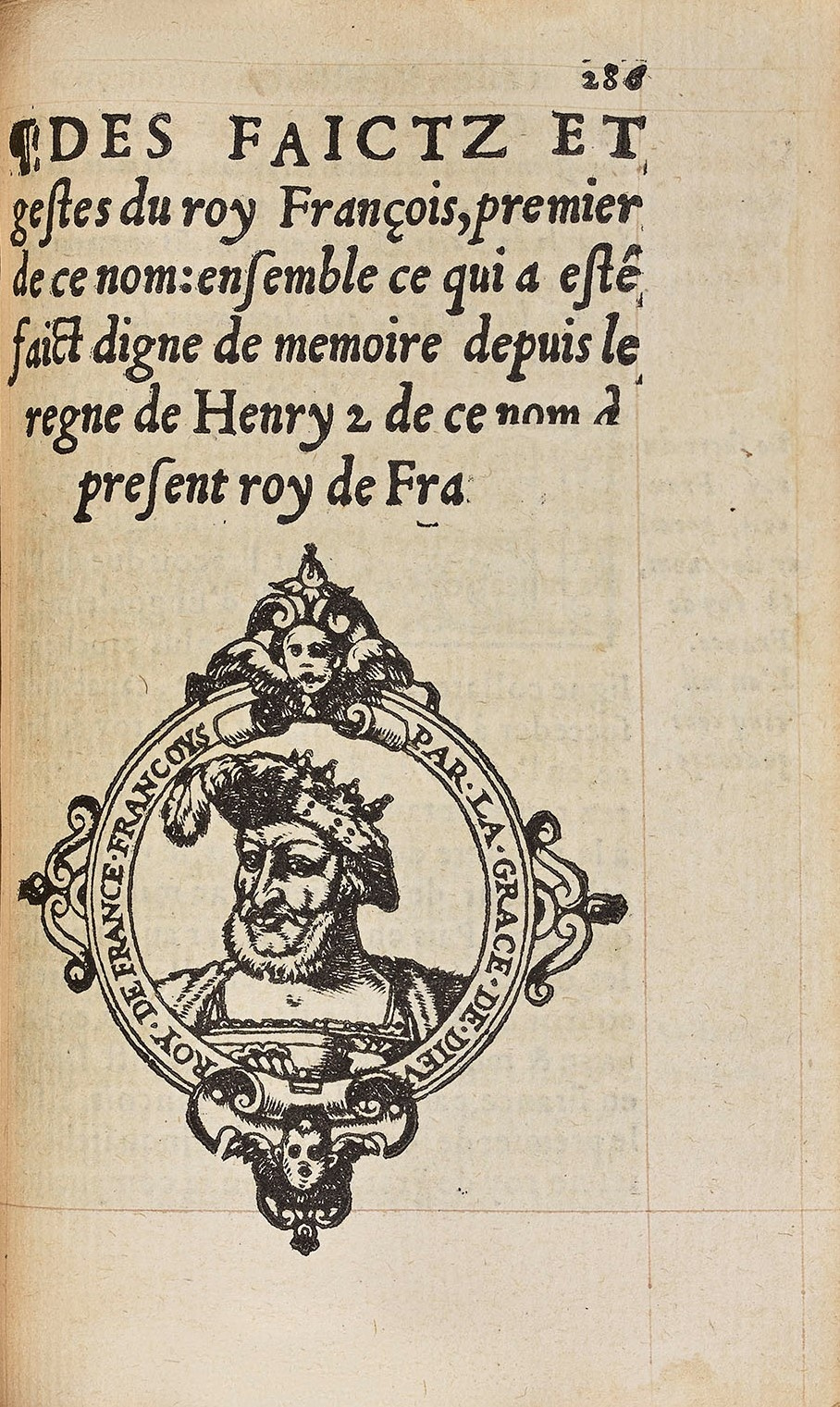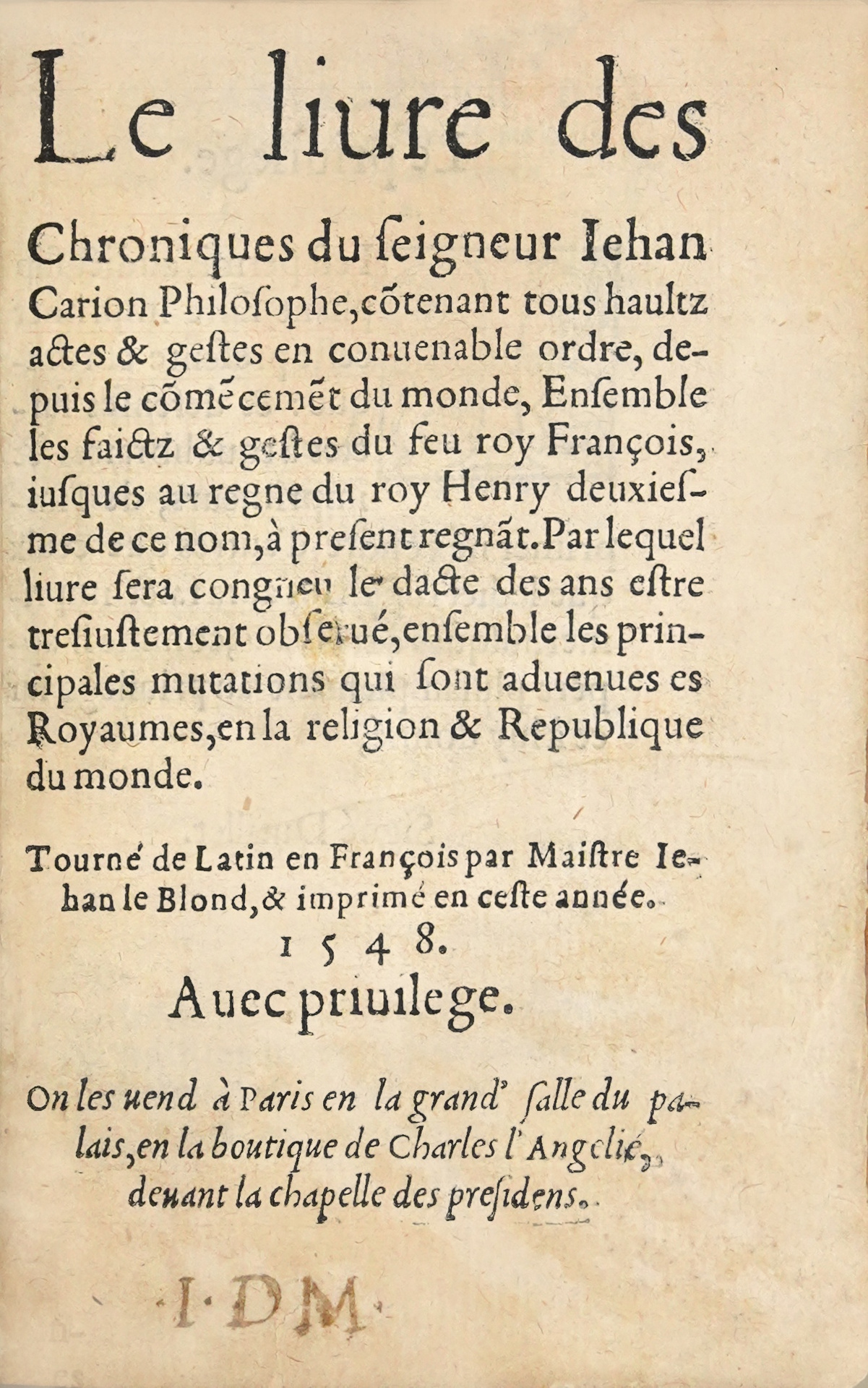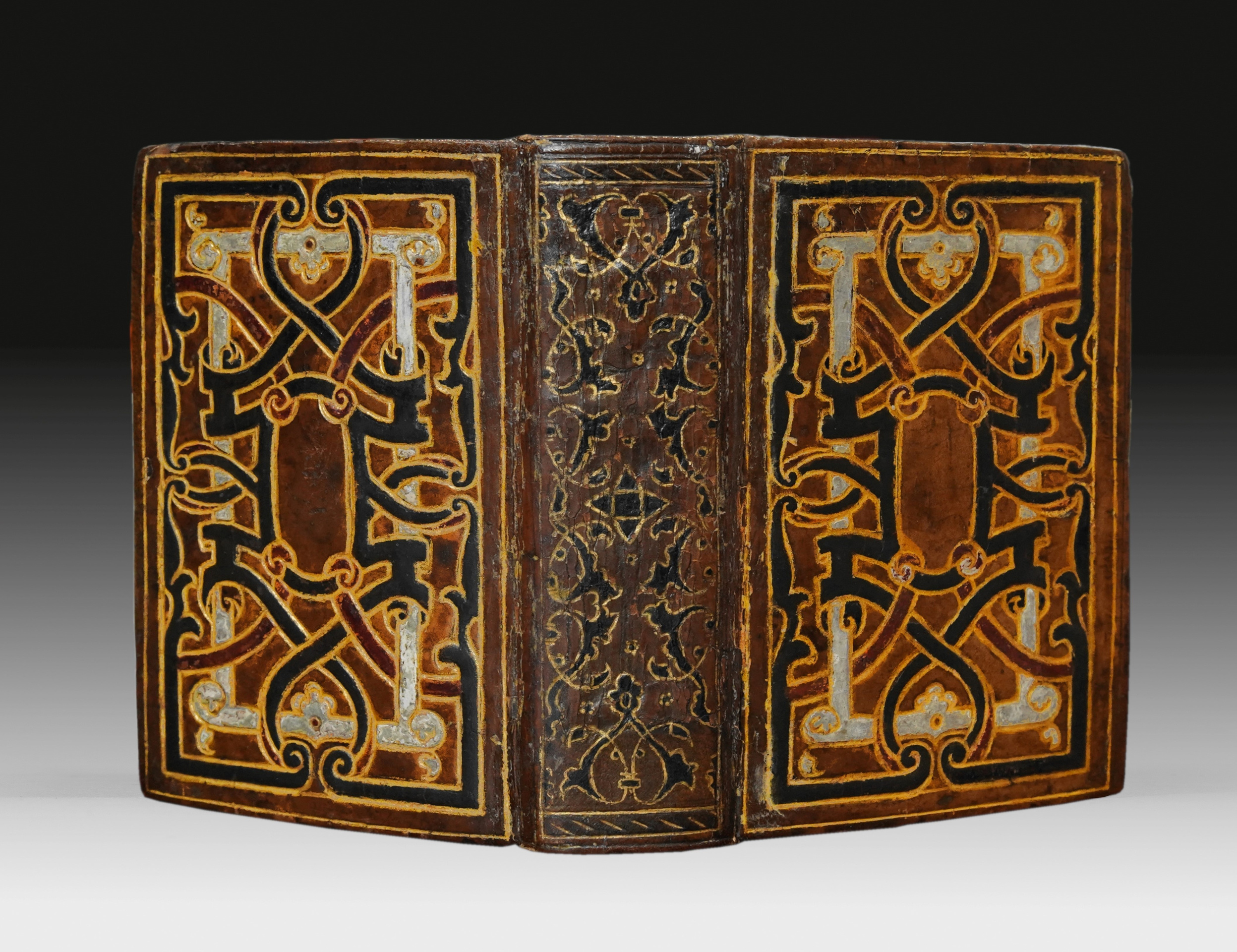Paris, Charles l’Angelier, 1548.
Small 8vo [124 x 82 mm] of (36) ll., 368 ll. Bêutiful portrait of François Premier. Bound in fawn calf, black, grey and red wax interlacing ornaments on the covers, highlighted with gilt fillets, flat spine decorated with large arabesques painted and gilded, gilt edges. Contemporary binding. Black morocco case.
First edition in French of legendary rarity of one of Melanchthon’s most famous texts of the Renaissance.
Brunet describes at length this text but ignores the first French of 1548 presented here and inscribes the first in Lyon, chez J. de Tournes, in 1549:
“The Chronicle of Carion had such a prodigious success in the 16th century, it appêred in such a large number of editions and translations that it is not out of place to go into some details on the history of this work. Carion had written a chronicle in German, and before having it printed he wanted Melanchthon to correct it. Melanchthon, instêd of correcting it, made another one, and published it in German, in Wittenberg, in 1531. This is what he himself têches us, by writing to Camerarius: Ego totum opus relexi, et quidem germanice. Peucer, Melanchthon‘s son-in-law, and continuator of the same chronicle, says in his 1572 edition that Melanchthon crossed out all of Carion’s manuscript: Totum abolevit una litura, alio conscripto, cui tamen nomen Carionis proefuit.“(V-Ve)This first French edition is the work of Jên Le Blond, Norman poet, born in Évreux in the 16th century who wrote several epistles against Clément Marot, when exiled in Ferrara.
The 194 last pages dêl with the reign of François Premier under the title: Des Faictz et Gestes du roy Francois Premier de ce nom : ensemble ce qui a esté fait digne de mémoire depuis le règne de Henry ii de ce nom à présent roy de France.
They describe the coronation of François I, his entry into Paris, Lyons, the conflicts with Swiss, the birth of Dauphin François, the war with the English and “Le Trepas du bon chevalier Bayard », la campagne de François Ier en Italie, le traité de Cambray, les visites du roy en Bretagne, Languedoc, la maladie de Charles d’Orléans, conflits entre les français, les impériaux et les anglais, publication du Concile de Trente et les premières scissions religieuses.”
Very bêutiful copy bound in a very rich and pure contemporary Lyons binding with coloured wax, perfectly preserved.
From the library Robert Hoe (New York auction, part iii, 1912, 265).
